20 Images Of Classic Gas Stations Showing How The World Has Shifted
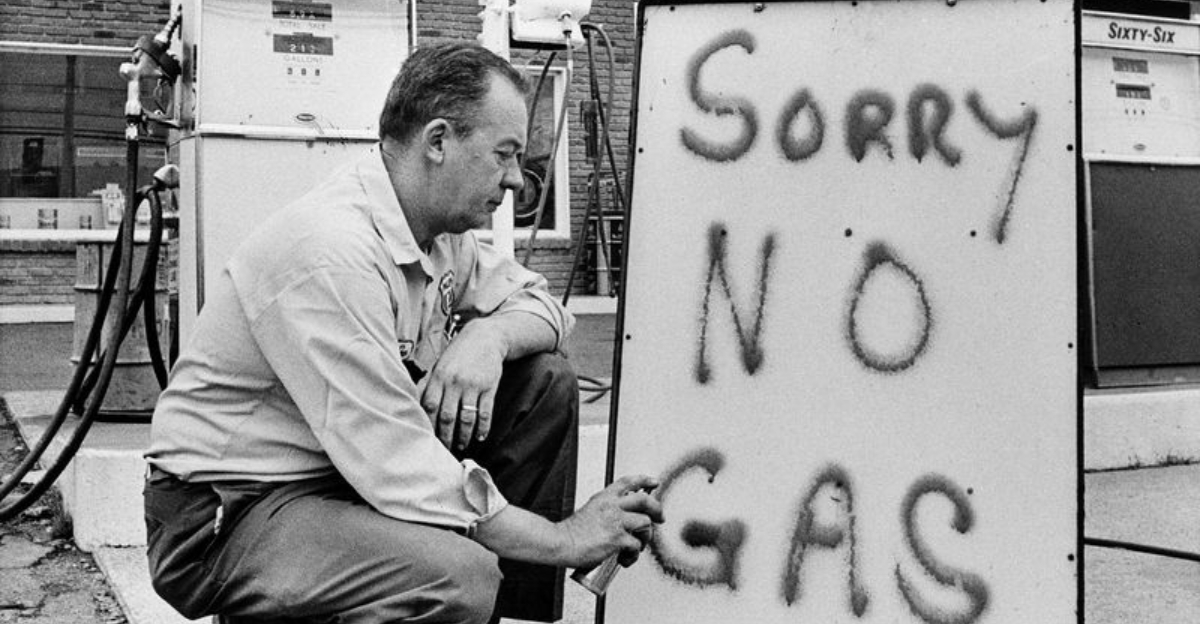
Gas stations have always been more than just fuel stops. Over time, they’ve served as cultural landmarks, hubs of innovation, and social gathering spots.
These 20 images of classic gas stations capture their evolution. Each photo tells a story of change, resilience, and creativity.
So, are you ready to fuel up on nostalgia? Hop in, grab some road trip snacks, and let’s hit the highway of history. And don’t ask me how much gas we’ve got left—we really need to find a station fast!
1. Futuristic gas station in Ukraine, 1979
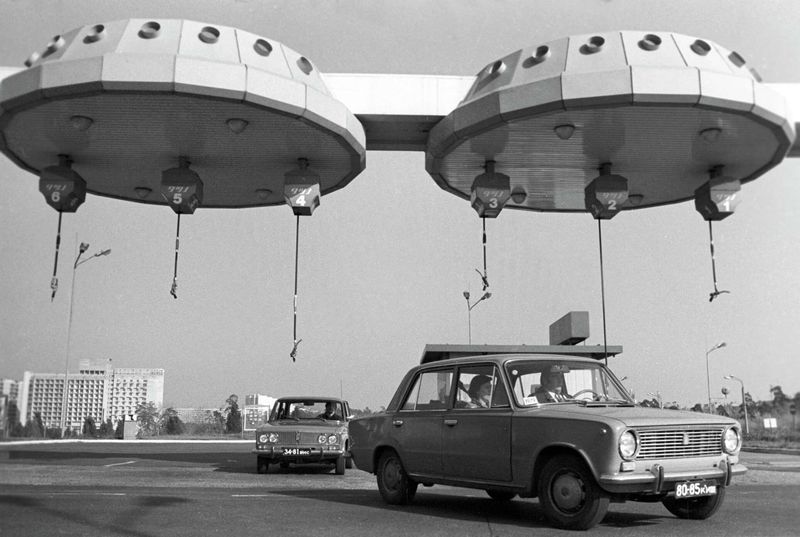
What did the future look like in the ’70s? In Ukraine, it looked like this gas station! It was a masterpiece of modernist design that could have been pulled straight from a sci-fi movie.
Outside, vintage cars lined up in perfect rows, creating a contrast between the past and the future. Inside, attendants wore uniforms that matched the station’s futuristic aesthetic.
Even today, remnants of these gas stations can still be found in Kyiv, though they no longer function as fuel stops.
2. Self-serve gas station, 1947
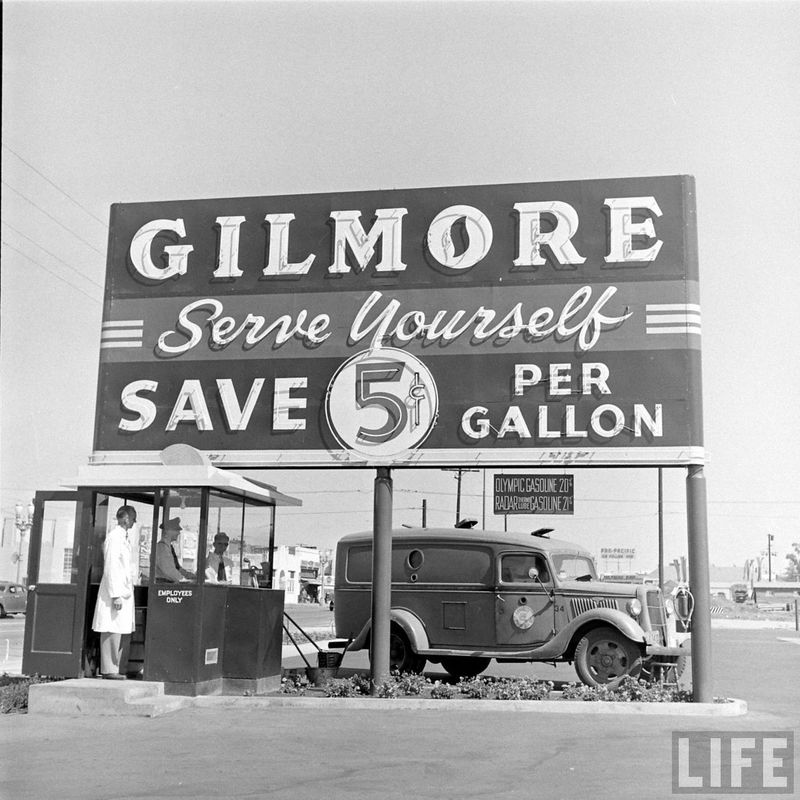
In 1947, gas stations were full-service. Attendants cleaned windshields and chatted with customers. But that changed when the first self-serve station appeared, and drivers had to pump their own gas. It was a big change at the time.
This moment marked the start of a new era, where self-service became the norm and attendants became a thing of the past.
This photo captures the birth of self-service—an idea that empowered drivers and changed fueling forever.
3. Bring back 1959 7-Elevens
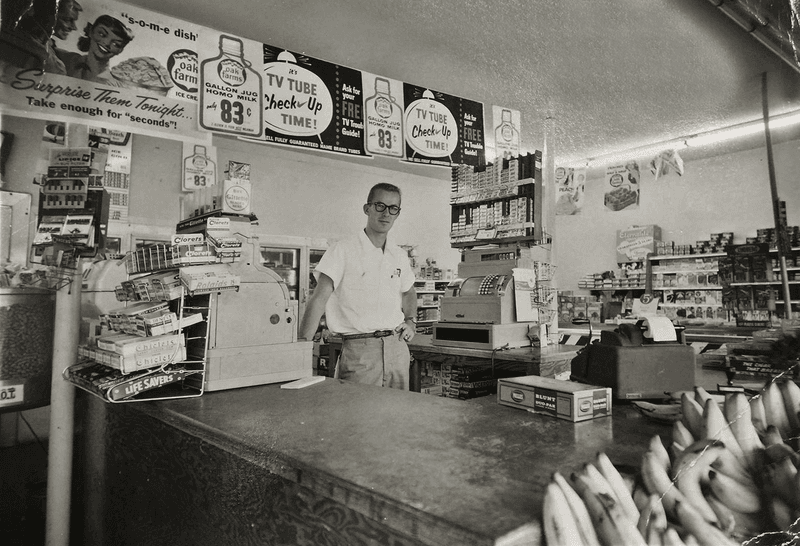
The 1959 7-Eleven gas station was more than just a pit stop—it was a community hub. With vibrant signage and colorful pumps, it drew in families for fuel, snacks, and friendly chats.
This was the dawn of the convenience store era. Gas stations became one-stop shops for life on the go. A nostalgic reminder of simpler times, when service came with a smile.
Do you remember those days?
4. Packed gas station during the 1979 oil crisis
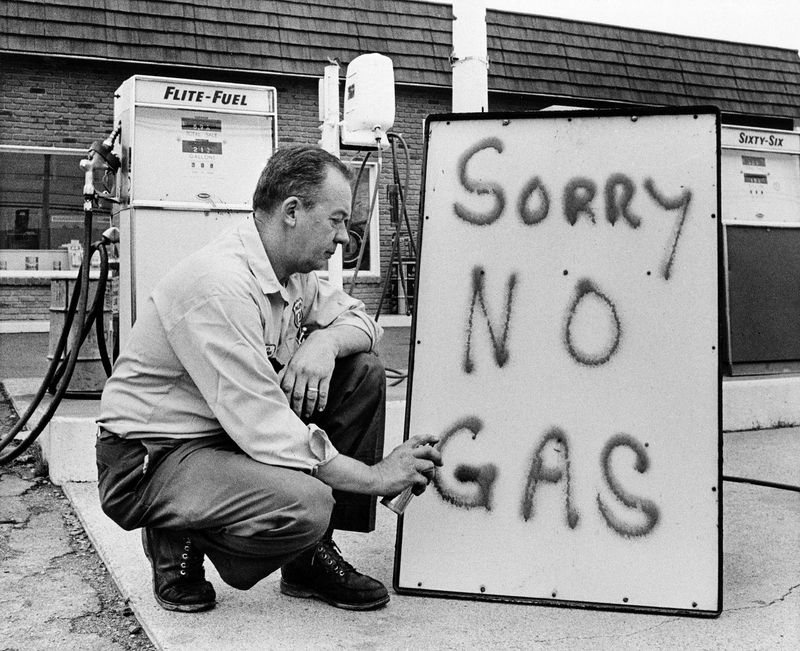
The 1979 oil crisis turned gas stations into battlegrounds. Long lines, frustrated drivers, and dwindling supplies exposed society’s struggle.
This photo captures the tense atmosphere of an era that forced us to rethink our dependence on oil. Though it was a challenging time, it also sparked a push for energy efficiency and sustainability.
What do you think?
Would we be as focused on electric cars and fuel efficiency today if moments like this hadn’t happened?
5. The old-school Tesla charger, 1973
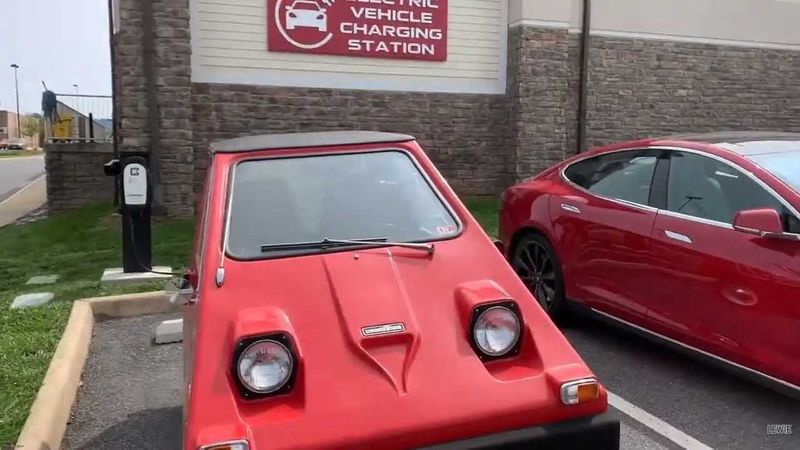
Think electric cars are a 21st-century invention? Think again.
Long before Tesla became a household name, there was the 1973 prototype electric charger. Simple, rudimentary, and almost laughably outdated by today’s standards—but it was there.
And it meant something.
It was one of the first steps toward the future we’re living in today.
6. Gas stations offered basic car repairs
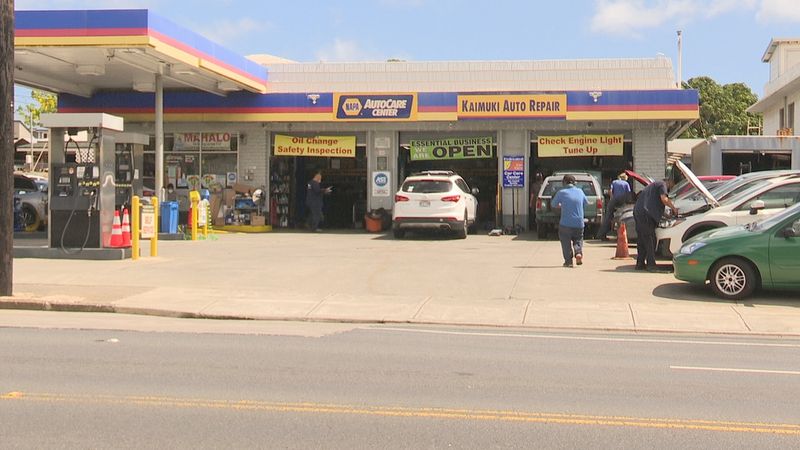
In the mid-20th century, gas stations were more than just places to fill up. They doubled as repair shops. Mechanics in oil-stained overalls tuned engines and changed oil, while customers waited with a newspaper in hand.
These stations were a lifeline for drivers, offering peace of mind and a strong sense of community.
Today, full-service gas stations are rare. But for those who remember them, they’ll always be a reminder of simpler times.
7. Motorized Roller Skates
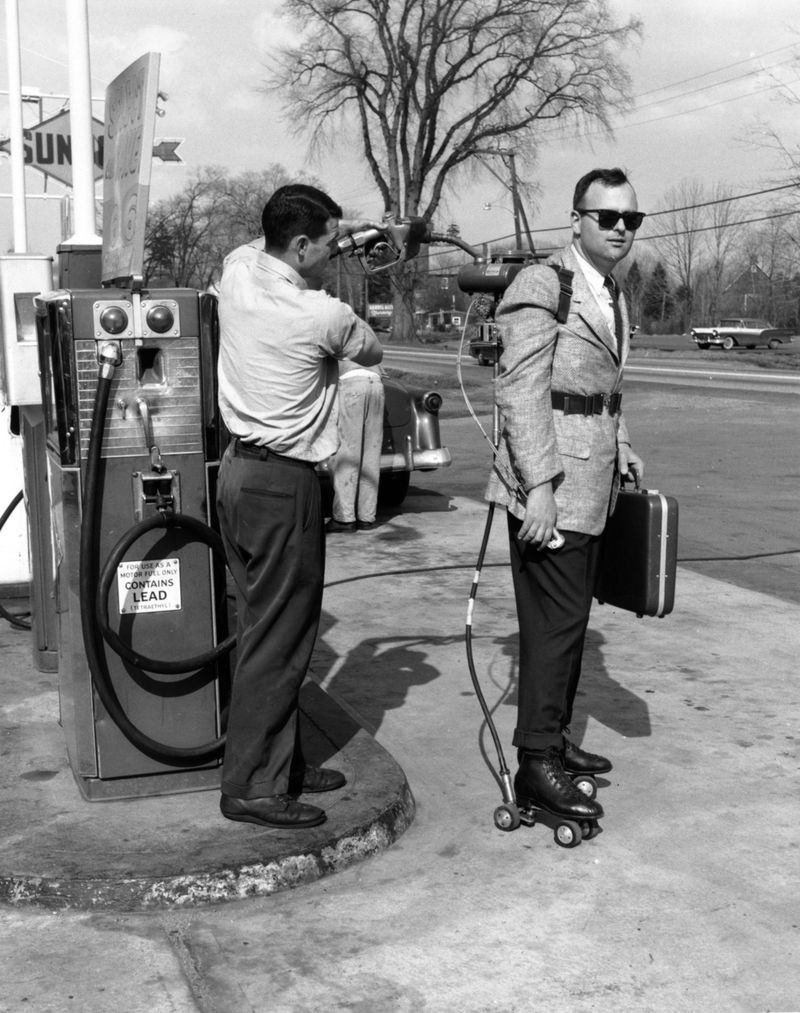
The 1960s were all about experimentation, and motorized roller skates were no exception. These quirky contraptions were equal parts marvel and spectacle.
They may not have been practical, but they sure were fun—a reminder that innovation doesn’t always have to be serious.
Ever seen one of these in action, or have a wild ’60s invention that you remember?
8. Imagine living through gas rationing
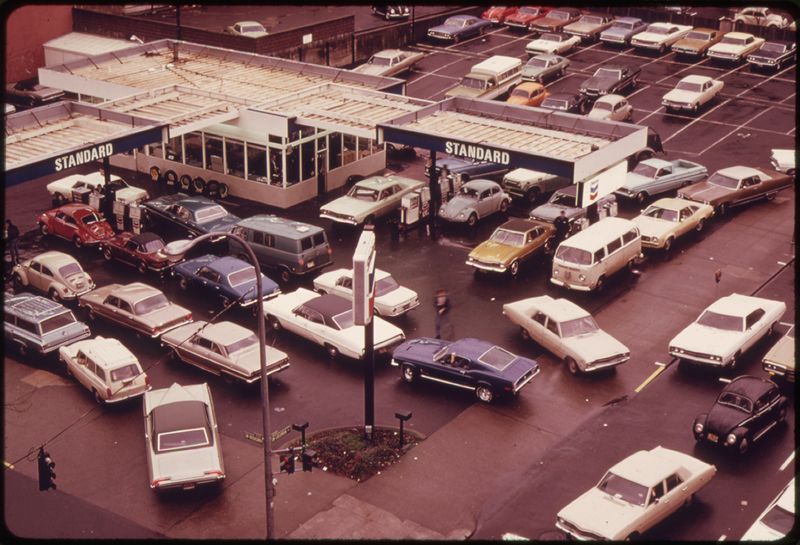
During World War II, gas rationing was a harsh reality.
This photo shows people patiently waiting in line with gas cans. What a stark reminder of the sacrifices made on the home front!
It was a time of resilience and adaptation, teaching us the value of conservation and resourcefulness.
9. La Brea Ave in LA
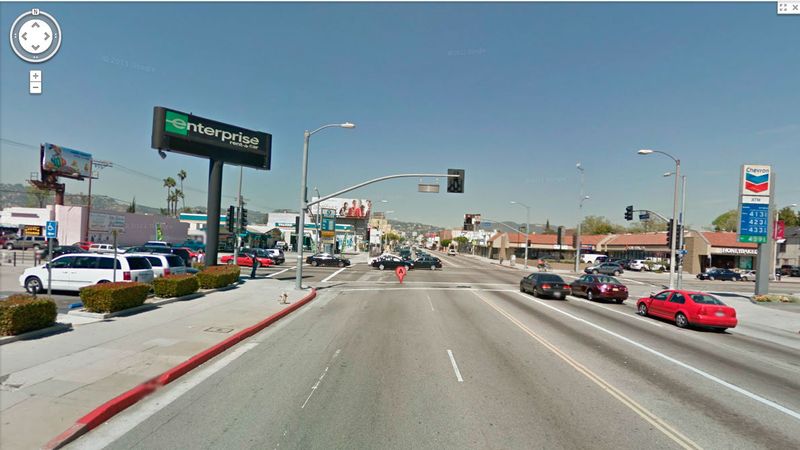
Los Angeles in the 1940s was all about cars, and nowhere was that more evident than on La Brea Avenue. It was a street lined with gas stations that never seemed to sleep.
It wasn’t just about refueling. It was about being part of something bigger. A culture. A movement. A way of life.
La Brea Avenue still exists today, but it’s changed. Yet, if you close your eyes, you can almost hear the hum of vintage engines and feel the echoes of a golden era.
10. In the 1940s families owned gas stations
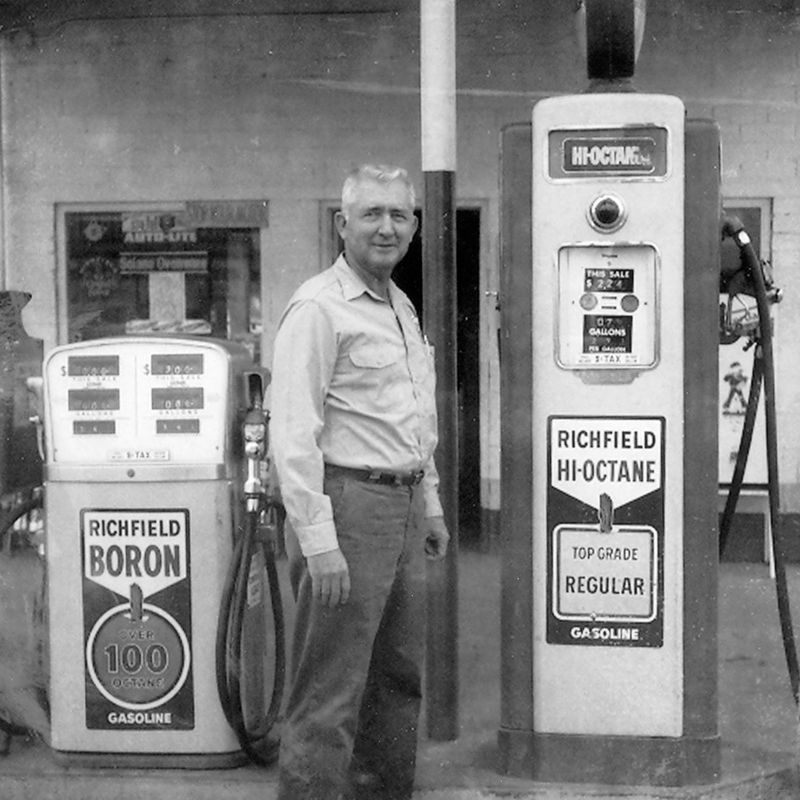
Family-run gas stations were the backbone of communities in the 1940s. Before big corporations took over, gas stations were a family business.
Moms and Dads ran the pumps.
But as the decades passed, independent stations struggled to compete. One by one, they disappeared, replaced by larger chains like Union 76 and Texaco.
11. Gasohol
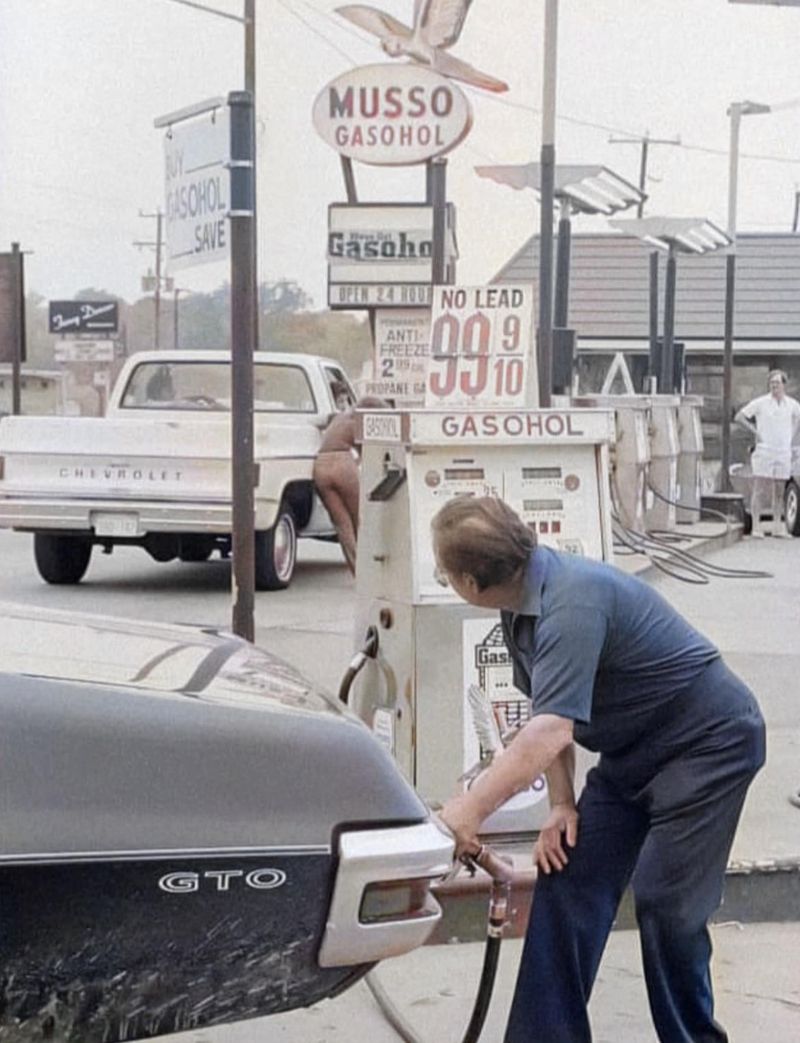
Long before electric cars, there was gasohol. It was a blend of gasoline and ethanol that aimed to revolutionize fueling.
With the oil crisis in full swing, people were desperate for an alternative. Gasohol seemed like the answer. It was cleaner, cheaper, and promised to reduce dependence on foreign oil.
But not everyone was convinced. Would it damage engines? Was it really better for the environment?
Today, when you see E85 or ethanol blends at the pump, remember—this idea isn’t new. It started decades ago.
12. Gas pumps were designed like slot machines
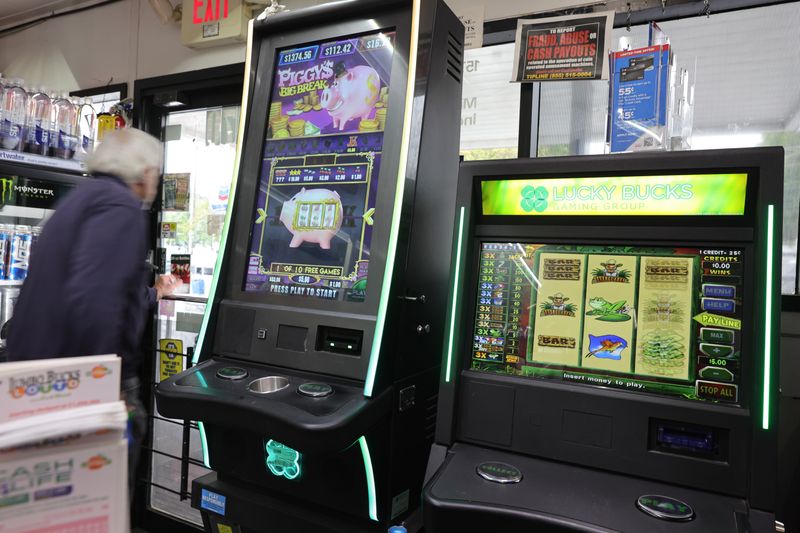
Who said filling up your tank had to be boring? Imagine pulling up to a gas station, gripping a slot machine-style lever, and pulling it down with a satisfying clunk.
Numbers spin. Click. Click. Click. But instead of winning coins, you get fuel. Yes, this was real. In 1964, some gas stations turned refueling into a game.
The goal? To make gas stops more exciting and keep customers coming back.
13. In 1964 when gas was $0.22 per gallon
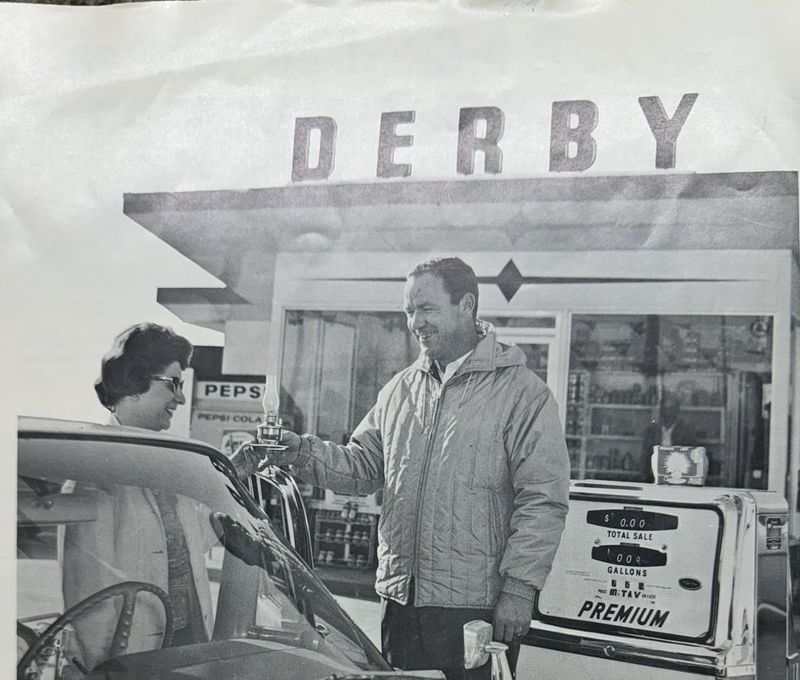
Can you imagine filling up your tank for just a couple of dollars?
In 1964, premium gas cost $0.22 per gallon. Road trips were cheaper, and Sunday drives were a beloved pastime. Gas was so affordable that no one thought twice about mileage.
Today, those prices seem unbelievable. But back then? It was just life.
If you could time-travel, what would you do first? Visit a historical event? Meet a legend? Or—be honest—would you pull into a 1964 gas station and fill up for a few bucks?
14. Luxury gas station in 1958
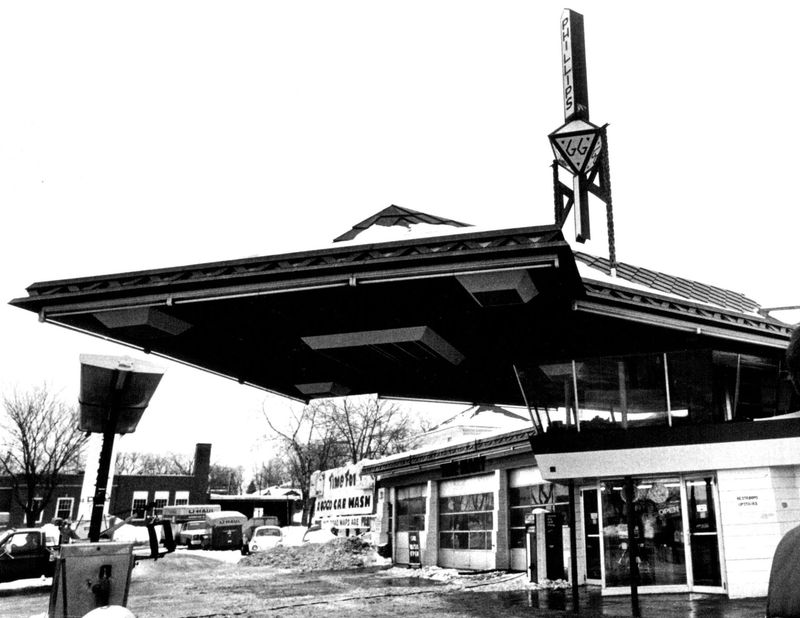
Most gas stations are practical, but this one was a masterpiece.
In 1958, Minnesota had what was considered the most beautiful gas station in the country. Attendants in crisp uniforms made each stop feel like a first-class experience.
Today, gas stations focus on efficiency. But this one? It was all about the experience—turning even the mundane into something luxurious.
15. The old 3-in-1
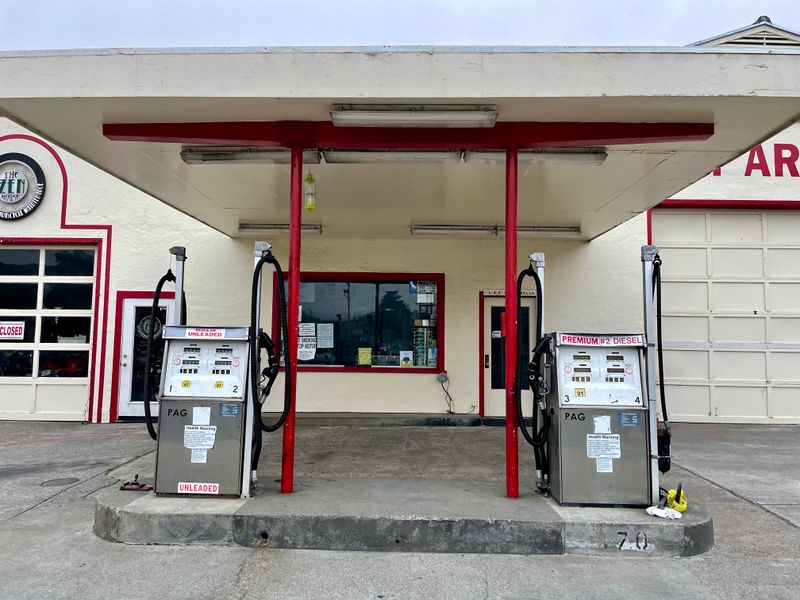
Need gas? A car wash? A meal?
In the 1950s, some gas stations offered it all in one place. A full tank, a sparkling clean car, and a hot meal—all in a single stop.
People lingered at these stations, chatting over coffee while their cars got serviced.
What’s your favorite gas station memory or stop?
16. $0.48 gas price
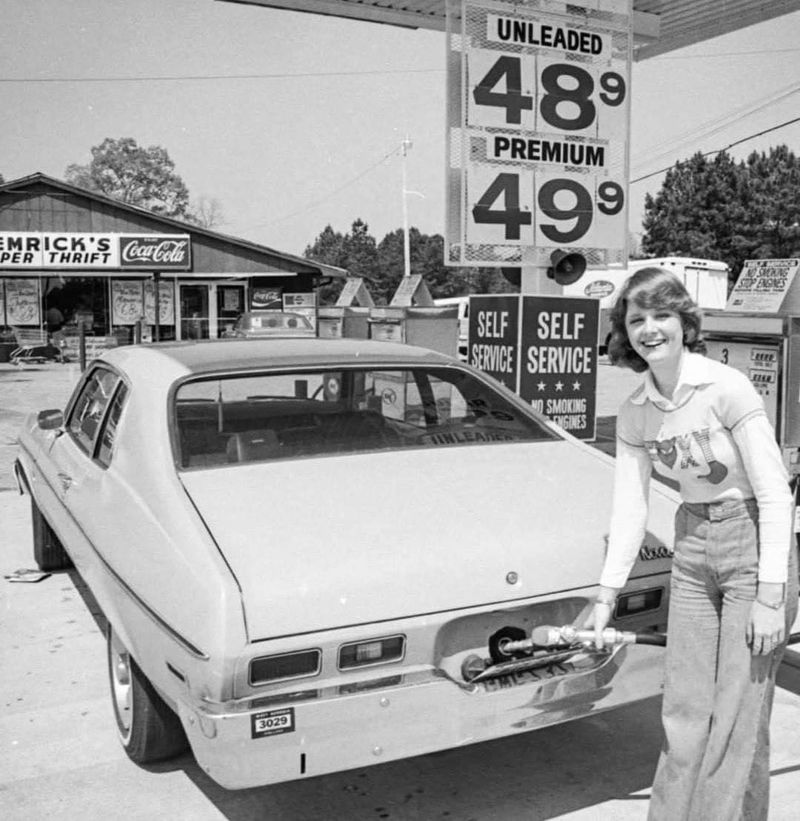
For years, gas was cheap. Then, the prices started creeping up.
In the early ’70s, gas hit $0.48 per gallon—a price that shocked drivers. Some adjusted their habits, while others protested.
Looking back, it seems laughable. But at the time, it felt like a crisis.
It was a lesson in perspective. Every generation experiences a moment when prices feel unbearable. But in hindsight? Those “high” prices don’t seem so bad after all.
17. Retro gas station
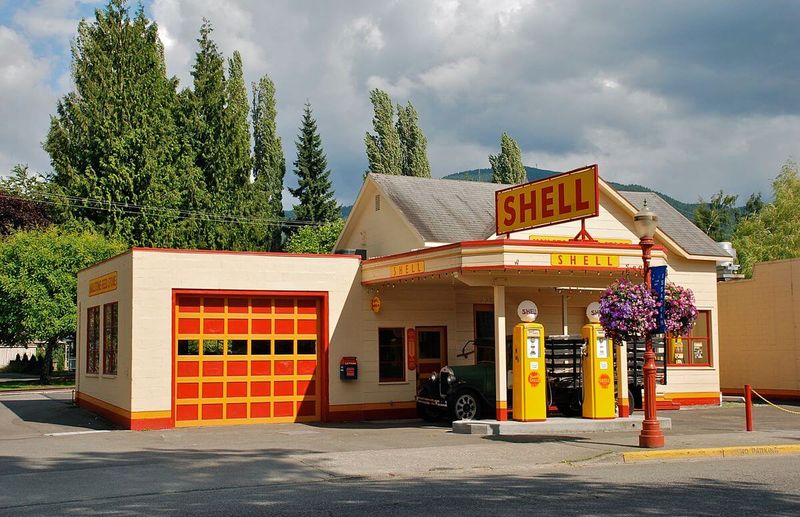
The retro gas stations of the 1960s were a feast for the eyes. Bold colors, geometric designs, and vintage pumps exuded timeless charm.
One of the most iconic stations from that era was Sinclair Oil, with its green dinosaur logo.
Today, many of these architectural gems are gone, but those that remain serve as time capsules. They remind us of a time when even gas stations had personality.
18. 1950s Chevron station
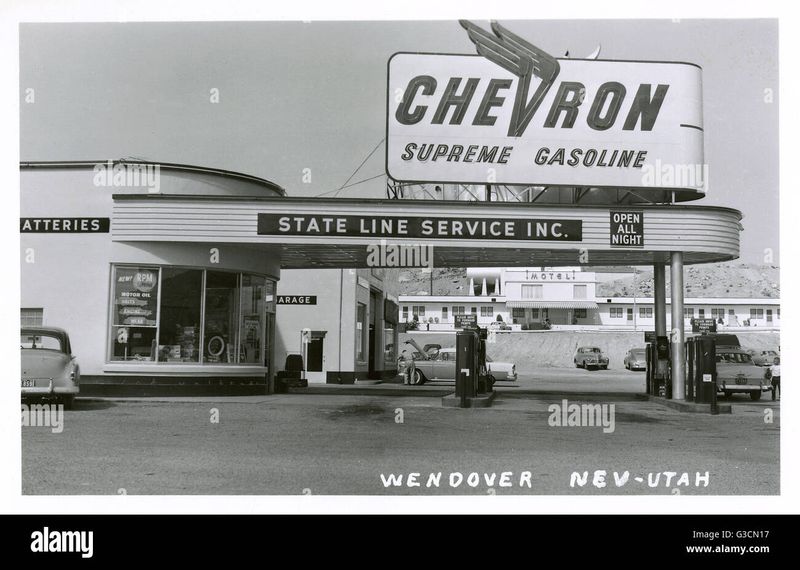
Bold signage. Red and blue branding. A symbol of reliability.
In the 1950s, Chevron’s gas stations weren’t just places to refuel—they were landmarks of the American landscape.
As highways expanded and car culture surged, Chevron became a trusted name for drivers across the country.
Decades later, the brand still thrives, proving that sticking to a strong identity can be the key to lasting success.
19. 16 gallons for 15 dollars
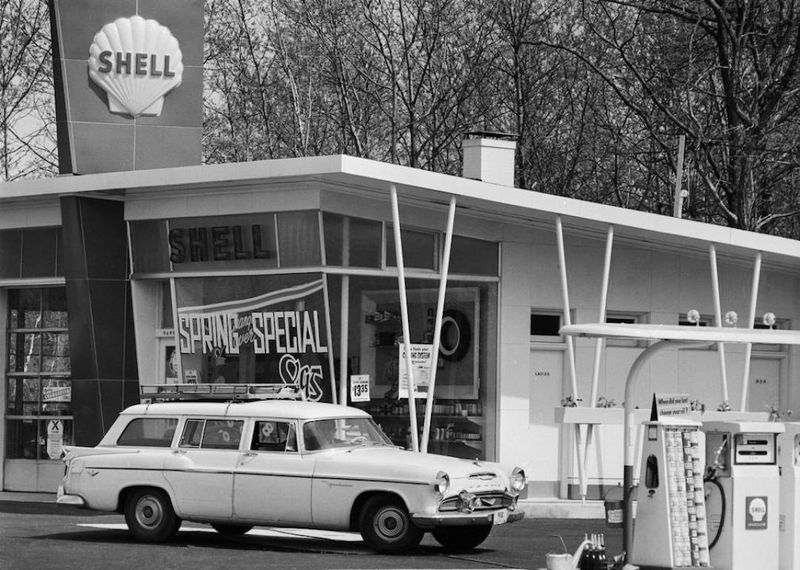
Ever seen a deal so good it felt too good to be true?
In the 1970s, a gas station offered 16 gallons for $15—an irresistible offer that kept the pumps constantly busy.
It was more than just a sale. It was a psychological trick. People love feeling like they’re getting a bargain, even if prices are climbing.
And it worked. This kind of gas station marketing is still used today. Different numbers, same strategy.
20. Texaco gas station
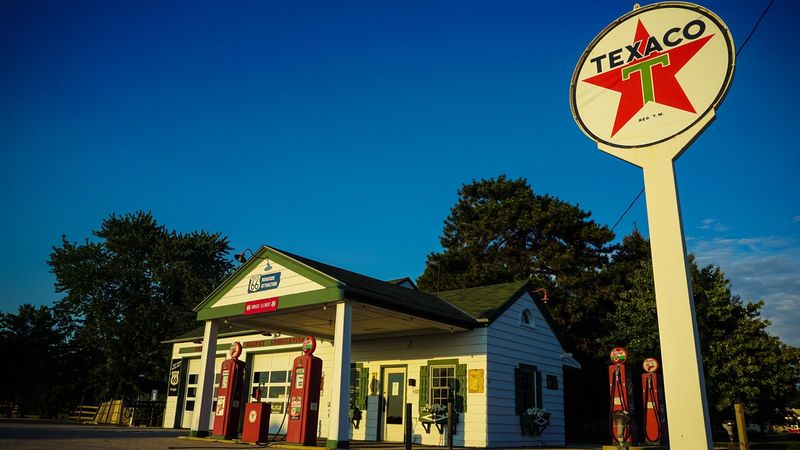
If you were on the road in the mid-20th century, chances are, you stopped at a Texaco station.
With its signature red star logo, Texaco stations were a fixture across America. They stood for quality, service, and the golden age of driving.
Today, Texaco still exists, but its golden era? That’s locked in the past.
A past filled with classic cars, friendly service, and the thrill of the open road.
